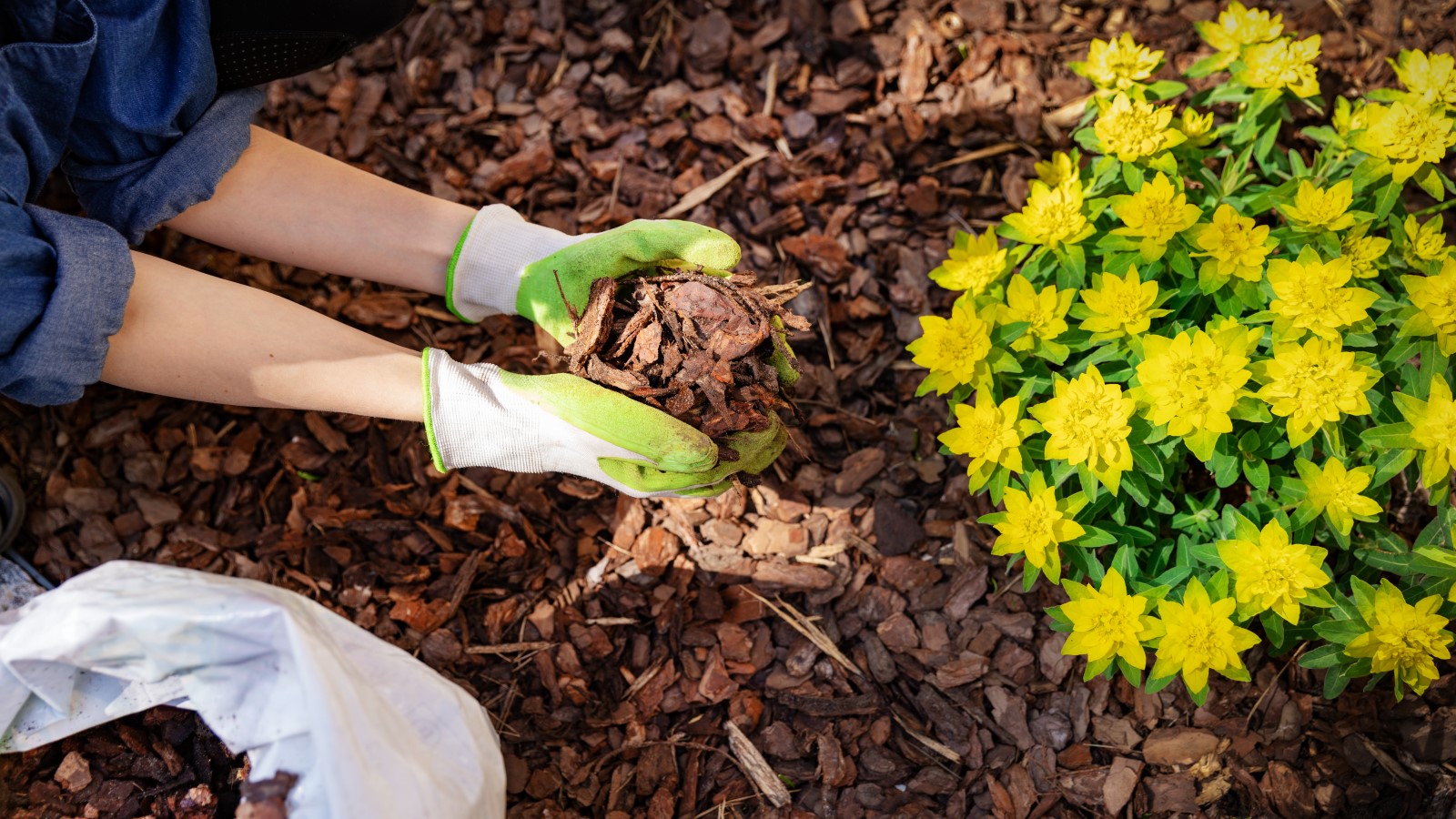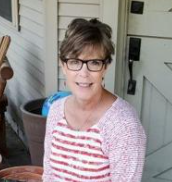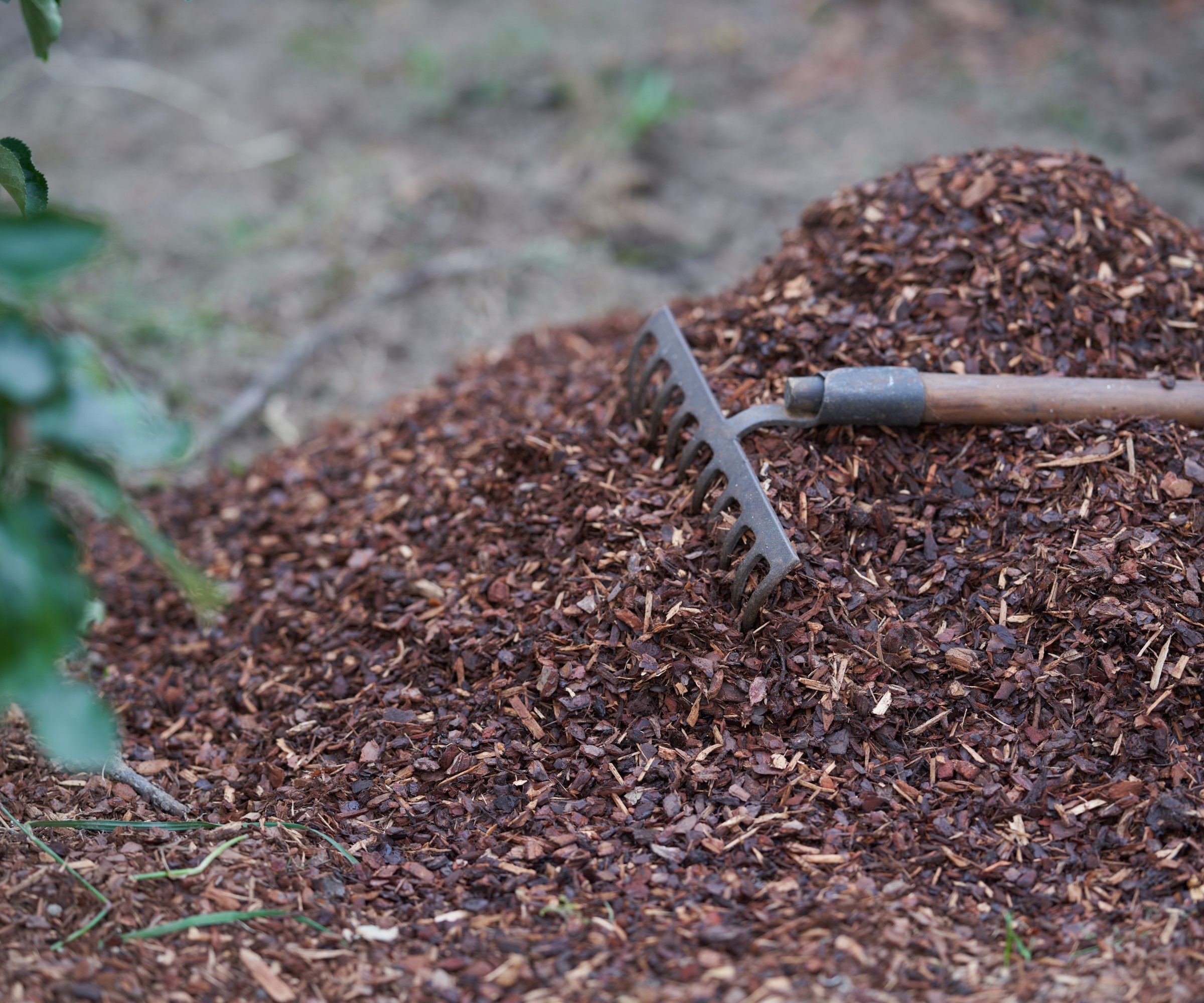Why you shouldn’t make this big mistake when mulching around trees
Experts agree that mulch will do wonders for your garden, but there are certain things you should always avoid


September is the ideal month to start thinking about mulching, but if you’re going to be mulching around trees as well as your beds and borders, avoid making the ‘mulch volcano' mistake.
Experts warn this trend, where mulch is mounded high against the base of a tree to create a neat and uniform look, can do more harm than good.
So what is it about this method that makes it a tree mulching mistake? 'A mountain of mulch, piled high against a tree trunk will not kill it immediately,' says Martha Smith, a horticulturist and former horticulture educator at the University of Illinois Extension.
'Rather, it is a slow death, and homeowners don’t associate their actions with tree decline several years after they over-mulched a tree.'

Why you need to avoid this mulching mistake
Landscaping around trees with mulch can offer benefits, but if done incorrectly or too much mulch is used, Martha Smith advises it can lead to problems.
Piling mulch onto the bark exposes it to dark and moisture, says Martha. 'The bark will start to rot, and rotted bark cannot protect the tree from insects and diseases, which grow better in this type of environment.'
If mulch is too heavy, it can deprive the roots of oxygen and reduce the soil’s ability to dry out. The mulch will also produce heat which will over-protect the tree and prevent its natural cycle of preparing for the seasons.
Design expertise in your inbox – from inspiring decorating ideas and beautiful celebrity homes to practical gardening advice and shopping round-ups.
Plus, too much mulch promotes the growth of secondary tree roots which encircle the trunk and can choke the tree’s vital main roots.

Martha Smith is a horticulturalist and former horticulture educator at the University of Illinois Extension. She was one of six extension horticulture educators who travelled the state, leading Master Gardener trainings and other horticulture programs. Martha's area of specialization was ornamentals. She is also a certified arborist.

Mulch does matter when used correctly
Used correctly, mulch helps the soil transition between seasons and can bring benefits such as improving quality and helping to get rid of weeds.
Mulches come in handy as they suppress new weed growth, help hold moisture in, make the garden or pots look tidy and depending on what you use, can also feed the soil. It's a great idea to know the right time to mulch flower beds and that mulching a vegetable garden can give you better, healthier crops come harvest time.

Using the right materials
Natural leaf droppings gathered from woodlands or your garden cost nothing and makes an amazing mulch.
To learn how to make leaf mold, simply leave leaf mulch in loosely tied bags for a year or so to degrade and when you apply it to your soil it will appear to disappear in no time.

FAQs
Which plants should I avoid mulching?
Any plant that likes dry, rocky conditions such as lavender, rosemary and sage will not tolerate mulching. You should also avoid mulching sedums and herbaceous evergreens such as heucheras and hellebores.
Other organic mulches include wood chips, pine needles, hardwood or softwood bark and cocoa hulls. Some organic mulches decompose quicker than others, however. Be warned; mulches of evergreen leaves, such as cypress, take years to break down and can look unsightly.

Jayne Dowle is an award-winning freelance gardening, homes and property writer who writes about everything from swimming ponds to skyscraper apartments, for publications including Sunday Times Home, Times Bricks & Mortar, Grand Designs, House Beautiful and The Spectator. Awarded the Garden Journalist of the Year accolade at the Property Press Awards in 2021, she has a degree in English Language and Literature from the University of Oxford and a lifelong love of homes, interiors and gardens. Her first memories include planting potatoes with her grandfather and drawing houses. Her own garden - her fourth - at home in a 1920s house in Yorkshire, is south-facing and on the side of a valley. It’s a constant challenge.